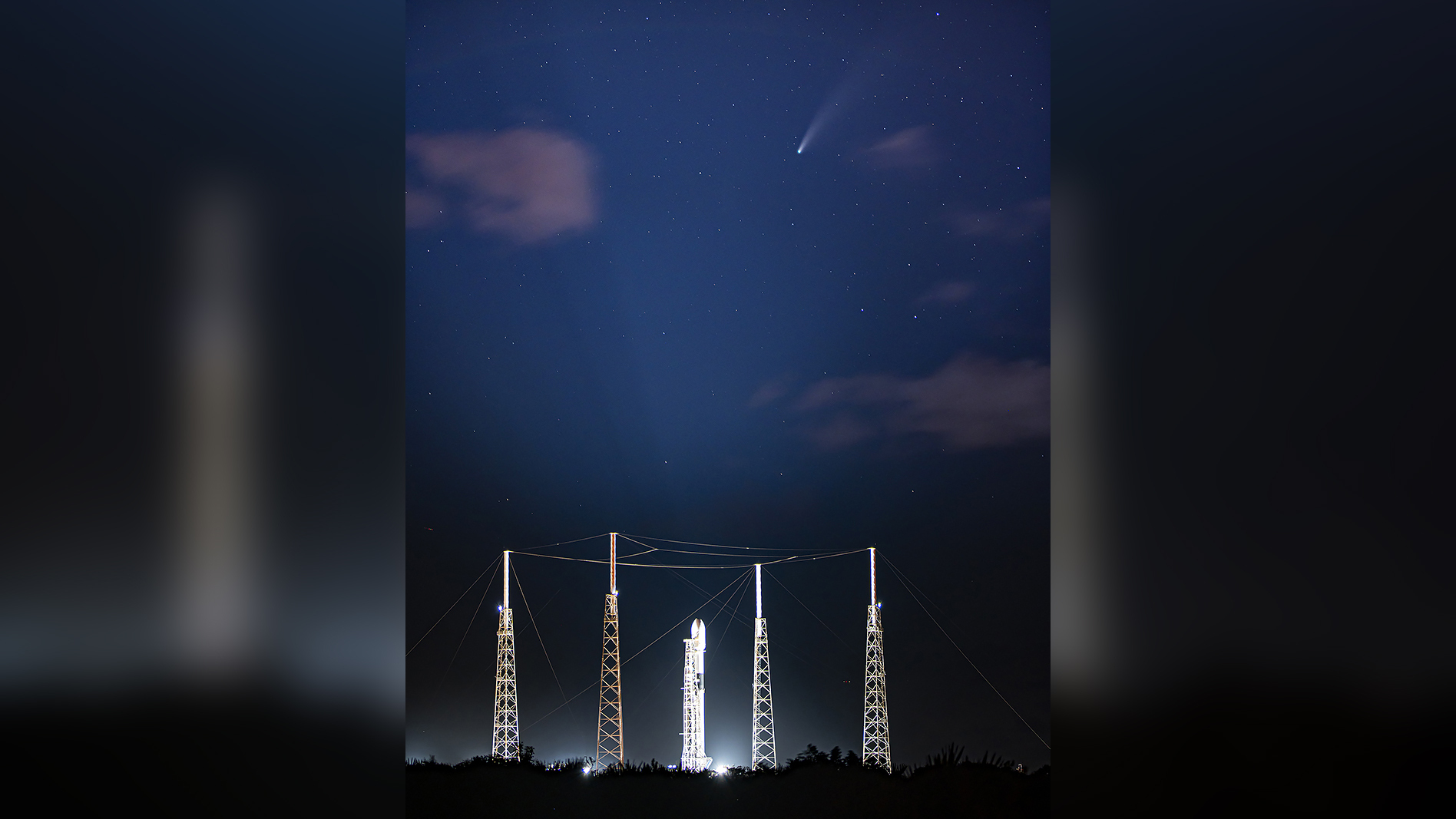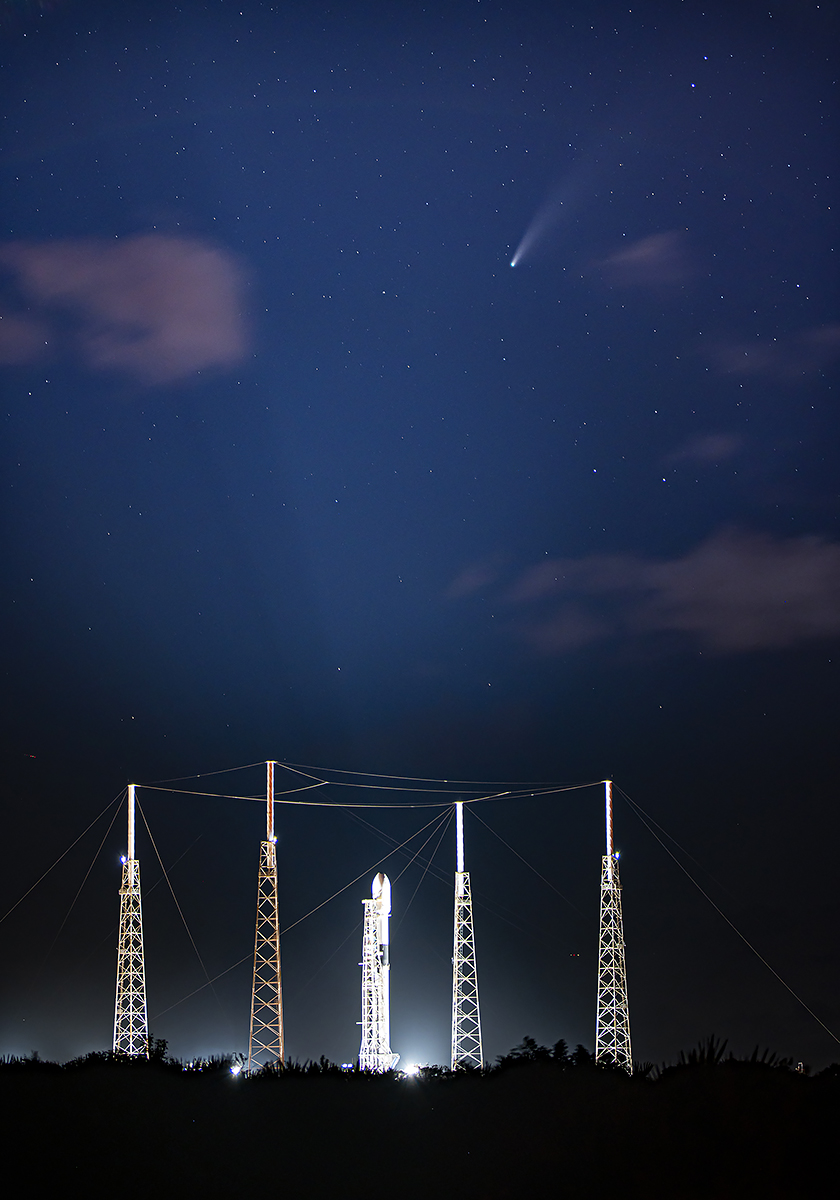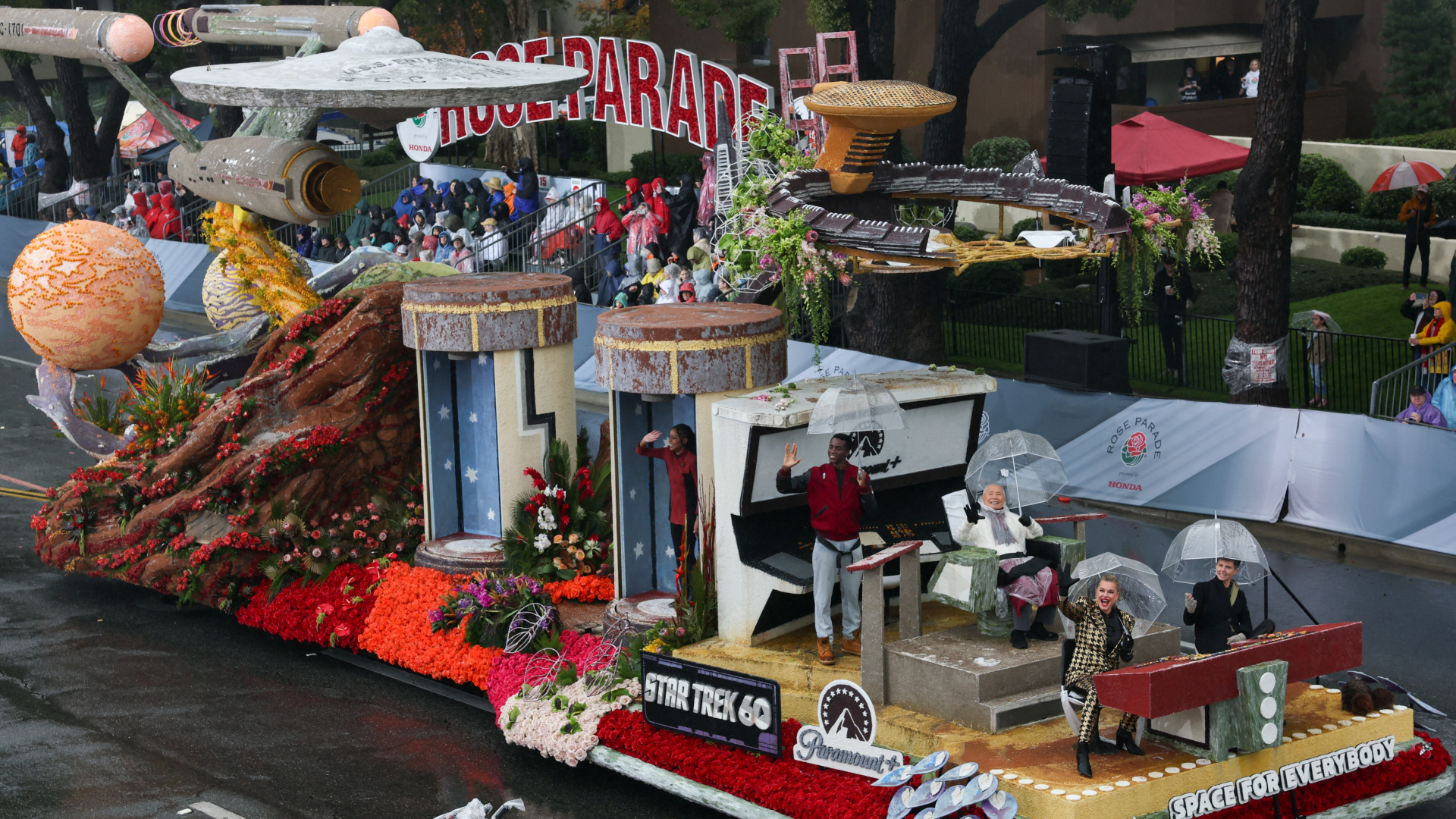Comet NEOWISE shines over SpaceX Falcon 9 rocket (photo)

Comet NEOWISE seems to beckon a fellow space explorer heavenward in a gorgeous new photo.
The image, which SpaceX posted on Twitter today (July 20), shows the brilliant comet blazing above a two-stage Falcon 9 rocket on the pad at Florida's Cape Canaveral Air Force Station.
The rocket won't be there much longer. It's poised to launch Anasis 2, South Korea's first military satellite, this evening during a four-hour window that opens at 5:30 p.m. EDT (2130 GMT). You can watch the liftoff live here at Space.com, courtesy of SpaceX.
Related: How to see Comet NEOWISE in the evening sky now
This will be the second flight for the first stage of this particular Falcon 9. On May 30 of this year, the booster helped launch SpaceX's historic Demo-2 test mission, which sent NASA astronauts Bob Behnken and Doug Hurley to the International Space Station aboard a Crew Dragon capsule.
Comet NEOWISE is the brightest comet to grace Earth's skies since Hale-Bopp back in the mid-1990s. NEOWISE is currently naked-eye visible to observers under clear, dark skies in the Northern Hemisphere; look just above the northwestern horizon, under the Big Dipper, shortly after sunset.
The 3-mile-wide (5 kilometers) NEOWISE was discovered on March 27 by NASA's Near-Earth Object Wide-field Infrared Survey Explorer spacecraft (hence the name). The comet made its closest approach to the sun on July 3 and is now zooming back toward the outer solar system, where it spends most of its time.
Breaking space news, the latest updates on rocket launches, skywatching events and more!
Comet NEOWISE will make its closest approach to Earth on Wednesday (July 22), coming within 64 million miles (103 million km) of our planet. NEOWISE will likely be visible through the end of July, experts say. But they also stress how unpredictable comets are and how difficult it is to forecast their behavior.
So go out and look at NEOWISE whenever conditions allow. We don't know how long the comet will keep putting on this sky show, and it won't be back in our neighborhood for another 6,800 years!
Mike Wall is the author of "Out There" (Grand Central Publishing, 2018; illustrated by Karl Tate), a book about the search for alien life. Follow him on Twitter @michaeldwall. Follow us on Twitter @Spacedotcom or Facebook.

Michael Wall is a Senior Space Writer with Space.com and joined the team in 2010. He primarily covers exoplanets, spaceflight and military space, but has been known to dabble in the space art beat. His book about the search for alien life, "Out There," was published on Nov. 13, 2018. Before becoming a science writer, Michael worked as a herpetologist and wildlife biologist. He has a Ph.D. in evolutionary biology from the University of Sydney, Australia, a bachelor's degree from the University of Arizona, and a graduate certificate in science writing from the University of California, Santa Cruz. To find out what his latest project is, you can follow Michael on Twitter.

